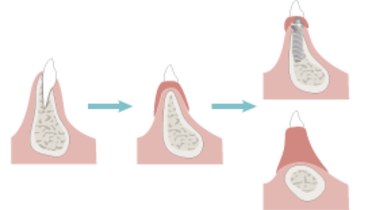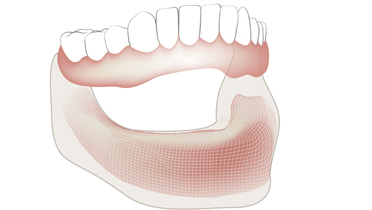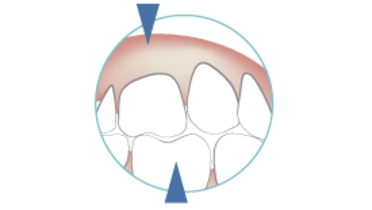-
0
Patient Assessment
- 0.1 Patient demand
- 0.2 Overarching considerations
- 0.3 Local history
- 0.4 Anatomical location
- 0.5 General patient history
-
0.6
Risk assessment & special high risk categories
- 5.1 Risk assessment & special high risk categories
- 5.2 age
- 5.3 Compliance
- 5.4 Smoking
- 5.5 Drug abuse
- 5.6 Recreational drugs and alcohol abuse
- 5.7 Parafunctions
- 5.8 Diabetes
- 5.9 Osteoporosis
- 5.10 Coagulation disorders and anticoagulant therapy
- 5.11 Steroids
- 5.12 Bisphosphonates
- 5.13 BRONJ / ARONJ
- 5.14 Radiotherapy
- 5.15 Risk factors
-
1
Diagnostics
-
1.1
Clinical Assessment
- 0.1 Lip line
- 0.2 Mouth opening
- 0.3 Vertical dimension
- 0.4 Maxillo-mandibular relationship
- 0.5 TMD
- 0.6 Existing prosthesis
- 0.7 Muco-gingival junction
- 0.8 Hyposalivation and Xerostomia
- 1.2 Clinical findings
-
1.3
Clinical diagnostic assessments
- 2.1 Microbiology
- 2.2 Salivary output
-
1.4
Diagnostic imaging
- 3.1 Imaging overview
- 3.2 Intraoral radiographs
- 3.3 Panoramic
- 3.4 CBCT
- 3.5 CT
- 1.5 Diagnostic prosthodontic guides
-
1.1
Clinical Assessment
-
2
Treatment Options
- 2.1 Mucosally-supported
-
2.2
Implant-retained/supported, general
- 1.1 Prosthodontic options overview
- 1.2 Number of implants maxilla and mandible
- 1.3 Time to function
- 1.4 Submerged or non-submerged
- 1.5 Soft tissue management
- 1.6 Hard tissue management, mandible
- 1.7 Hard tissue management, maxilla
- 1.8 Need for grafting
- 1.9 Healed vs fresh extraction socket
- 1.10 Digital treatment planning protocols
- 2.3 Implant prosthetics - removable
-
2.4
Implant prosthetics - fixed
- 2.5 Comprehensive treatment concepts
-
3
Treatment Procedures
-
3.1
Surgical
-
3.2
Removable prosthetics
-
3.3
Fixed prosthetics
-
3.1
Surgical
- 4 Aftercare
全口义齿临床方案
Key points
- 缺齿患者可以通过不同技术得到康复
- 实现临床目标最有效的方法是实施规程方案
- 软组织健康修复是印模之前的一个重要前提条件
全口义齿临床方案
带有活动修复体的缺齿患者若想成功实现口腔修复,需要认真遵守临床方案。 现已成功引入了一些简化的方案。
使用包括下列大多数步骤或全部步骤的规程临床方案可以实现临床目标:
1. 修复软组织健康。 缺少大片附着的粘膜似乎不会对软组织健康产生不利影响。 很少针对牙龈/粘膜移植手术作出规定。 为了制作所需的石膏诊断模型,需要在库存托盘中制作不可逆性水胶体印模。
2. 使用弹性材料制作定制印模托盘和最终印模,同时记录修复体的功能边缘延伸。 然后浇注最终石膏模型。
3. 制作并调整蜡咬合堤,以建立咬面高度,同时建立咬面的正确垂直距离、合适的笑线和唇线。
4. 记录上下颌位关系和安装颌架(使用或不使用面弓均可)。
5. 选择并排列人造假牙,以试戴临时结构。
6. 对垂直和水平颌关系、正中颌位关系和整体美齿效果的期望修复进行临床评估。
7. 放置义齿,包括评估患者舒适度、功能和美齿效果。 必须特别注意义齿基托贴合情况和延伸情况、语言能力和咀嚼能力的功能因素、咬合情况以及外观/软组织支撑。
8. 放置后对患者舒适度、功能和美齿效果进行评估。 根据需要进行调整。



